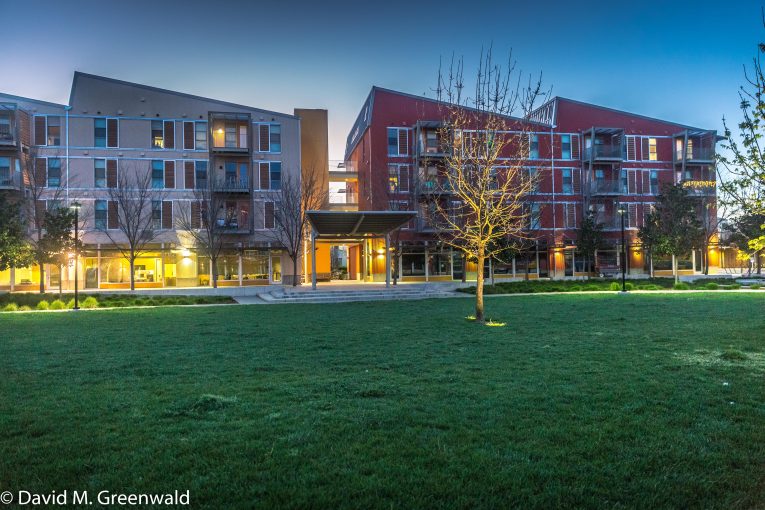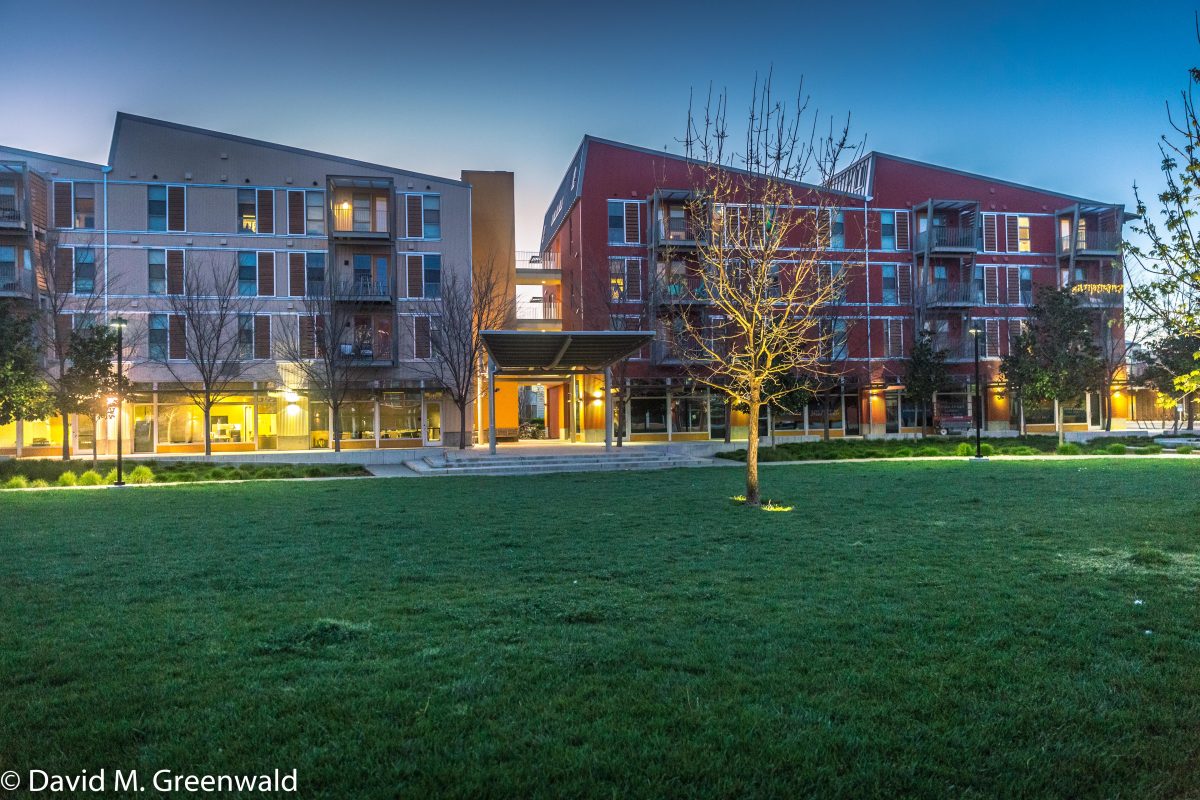

by Julia Ann Easley
UC Davis News
Housing developed within the City of Davis and on the UC Davis campus over the last six years added accommodation for almost 7,000 more residents by fall 2022, according to a new report.
The Joint Housing Report from UC Davis, Davis and Yolo County was released Tuesday.
The report’s updates are intended as an opportunity for Davis and the university to consider additional policy options, explore collaborative opportunities and jointly respond to continued housing challenges and opportunities.
In the report’s message to community members, leaders from the university, city and county highlighted the need to provide more housing in the area. “For our communities to prosper, our collective dedication is focused on expanding the availability of housing in the region, both market-rate and affordable housing.”
The message is signed by UC Davis Chancellor Gary S. May, City of Davis Mayor Will Arnold and Yolo County District 2 Supervisor Lucas Frerichs.
The report estimates that in 2022-23, Davis housed approximately 67,000 individuals and the university over 13,600 students — for a total of 81,000 people.
Six new housing projects would add nearly 2,800 beds to the university campus by 2030.
Residential projects pending or under construction in the city include 2,150 units (including single-family homes, townhomes and apartments) with about 3,460 beds or bedrooms.
This housing report is the second published by the university, city and county and stems from their 2018 Memorandum of Understanding, or MOU, on partnership and growth.
UC Davis housing
The report notes that UC Davis is on track to meet or exceed the MOU’s target for the university to have 15,000 beds by fall 2023. With the late summer opening of the Orchard Park Redevelopment Project and its apartments for approximately 1,486 students with families, graduate students and undergraduate students, it is estimated that more than 40% of UC Davis enrolled students based in Davis would have access to campus housing.
UC Davis has also exceeded an MOU milestone to house 100% of the enrollment growth on campus since the campus Long Range Development Plan’s base year of 2016-17. Since then, 3,790 more students are living on campus — nearly 130% of the actual enrollment growth to date of 2,939.
Also in the report:
- Results from an annual Apartment Vacancy and Rental Rate Survey show low vacancy rates among large apartment complexes in Davis, most recently 0.2% for apartments rented by the unit and 1% for those rented by the bed.
- A section on affordability by design notes a 2018 study showing that structures of three to five floors offer the lowest rents and a better quality of life for residents, while taller structures trigger more restrictive code requirements and higher labor costs.
- Through its Basic Needs Initiative, the university has enhanced housing assistance, including its Need-Based Rent Subsidy program, starting its fourth year in fall 2023.
City of Davis
The report indicates that housing prices in Davis are generally higher than in the rest of the county. According to the 2013-2021 Housing Element, annual household incomes must generally exceed $100,000 to afford to buy a home in Davis.
Housing costs are considered excessive when more than 30% of the monthly household income, and data shows 10.5% of owner households in Davis experience excessive housing cost burdens and another 6.5% experience severe housing cost burdens.
Renters are more impacted by Davis’ housing costs. Nearly 17% experience excessive housing cost burdens, and an additional 39.4% experience severe housing cost burdens. The burdens disproportionately affect low- and very low-income households and those with families.
The report highlights the ongoing work of Davis’ Rental Resources Program, established in 2017 as a one-stop shop for rental registration, education and inspection. Through the program, the city is working to abate nuisances and gain compliance with state and local laws related to rental properties.






Seems quite low. How does that compare with other locales?
But one question I would have (in general) is whether or not these types of reports look at ongoing housing expenses (e.g., those who are retired and have low income, but have paid off their house). In such cases, the only increasing “burden” would be rising taxes and other costs associated with home ownership.
So if they’re not (also) looking at ongoing housing expenses, this type of data has no meaning. But even if it did – that percentage seems relatively low.
In general, there are lots of people who have low income, but also have (relatively) low housing expenses – even in areas where the cost of housing is no longer cheap. They’re usually called “retirees”.
Now that I think about it, it’s not limited to that group.
Others would include those, for example, moving from the Bay Area (and bringing a substantial amount of cash with them). Enough to buy a house in cash (or a substantial portion thereof). Even if their income was low.
So, if this report only looks at housing sales prices, rather than monthly payments – it again would have no meaning. And even then, some pursue 15-year mortgages in order to pay off their house sooner – even if it results in them being “cost burdened” during that period.
And some “purposefully” stretch themselves quite thin in the first place, to get as much house as they possibly can – even if it’s more than they “need”. (I understand this is quite common, actually.) Part of the reason for this is so that they don’t have to incur the massive expenses associated with selling and buying another (e.g., larger) house, in the future. I don’t know what the figures are, but I suspect that the days of “move-up” housing is somewhat of a myth, if one stays in the local market. (Again, a reason that retirees are increasingly choosing to “age in place”.)
But the biggest increase (right now- for anyone attempting to purchase without much equity) is (of course) rising interest rates over the past year. By far.
Ironically, I suspect that the percentage of homeowners who would be “cost burdened” would increase if more development is pursued. (Unless they’re from one of the other groups mentioned – retirees, and/or those with equity.)
Housing burden on owners is calculated based on mortgage and property taxes. However, this segment has a self limiting mechanism in that mortgage lenders take account of housing burden when determining whether to issue a loan. Very few new owners would be counted as burdened for this reason. Those who are burdened probably either experienced a drop in income or refinanced their house at a much higher level to cover other expenses. This will always have a relatively low level. The bottom line is that those who would be burdened are closed out of the market and don’t show up in the statistics.
The actual focus is on renters, where 56% of Davis renters are heavily burdened. These households are closed out of home ownership due to the high property values that support high rents. We know that the housing supply shortage is driving most of this rent premium.
The manner in which UCD came up with this calcuation is not disclosed.
That is true.
I suspect that lenders do allow buyers to exceed the “recommended” amount (depending upon considerations such as credit score), but I don’t know to what degree.
Again, how would UCD know this, in regard to what they’re reporting on here?
How does Davis compare with other communities, regarding these percentages?
Yeah – they’re called non-residents, and/or those without any connection whatsoever to a given community. They might live/work in Waco, or Bakersfield.
They’re “closed out” because they’re students – they’re not shopping for a house. (Though I’ve heard reports of wealthy parents occassionally purchasing houses for their own kids in Davis – just for the period of time that they’re attending UCD.) I suspect that a lot more parents subsidize students’ rent, as well. (Sometimes parents have to sign off on lease agreements as the ultimate “responsible party”.)
Again, the “rent premium” as you call it (which is measured by comparing it with income) is due to the fact that they’re primarily students, and are not earning much income (yet).
But getting back to what UCD is reporting, it has no meaning whatsoever unless they disclose how they came up with those percentages. Again, there’s many, many people who are “house rich”, but “income poor”. Usually (but not always) retirees.
“But getting back to what UCD is reporting, it has no meaning whatsoever unless they disclose how they came up with those percentages. Again, there’s many, many people who are “house rich”, but “income poor”. Usually (but not always) retirees.”
How closely did you read the actual report?
How closely did you read the actual report, before posting selected highlights?
Isn’t this your job – to analyze? And, isn’t one of the purposes of the comment section to explore these issues, rather than just accept what you choose to focus on?
And if you’ve looked at it (and found that information), how about just answering the questions – rather than questioning me? (I did not see those answers in there.)
The answers to your questions are in the full report.
I did not see those answers. And again, I usually don’t feel that it’s the reader’s responsibility to “research” in detail what the Vanguard chooses to report.
If you say that they’re there, then please post them. Because again, the percentages you selected to post have no meaning without knowing those answers.
But again, the percentages themselves are much lower than what I would expect you to report, in regard to the Vanguard’s advocacy.
For that matter, the “other” figure ($100K/year for an entire household) is also quite low.
In other words, two people (let’s just say a married couple) each earning $50K/year, with a downpayment, I assume) is well-within the range of local salaries.
Lots of “single” people earn that much, for that matter.
How exactly is that a “crisis”? Especially for a town where everyone and their grandma has a college degree?
And that’s not even counting all of the people who arrive with pre-obtained equity.
Bottom line:
UCD is on track to achieve or exceed all of the terms of the 2018 Memorandum of Understanding with the City of Davis.
They don’t build taller buildings because it is more expensive on a per-square-foot basis to do so.
Even if they exceed their original enrollment projections, they have agreed to house 100% of the increased enrollment on campus.
This is yet another example of a statement that should not be taken at face value, regarding “justification”.
Also, isn’t it ALWAYS more expensive to build taller buildings per square foot, if the land itself is “free” (e.g., already owned by UCD,)? In other words, no financial incentive to build higher? (Of course, this would not necessarily be true if the land itself wasn’t already flat as a pancake.)
In other words, wouldn’t a two-story building (also) be more expensive than a one-story, in that situation?
How is it that student housing in the city exceeds this height? Is it because the land is not free?
2023 report:
I don’t know why we should care how tall their buildings are so long as they are fulfilling the terms of the MOU.
Don: Reciting the same comment/claim as the one in the article above doesn’t shed light on anything. More detail would be needed, to even determine if it’s true (and/or “how” true). Again, they’re building taller structures than that IN the city.
The reason to care is because taller buildings provide more housing, and on less space – including on campus.
Though one would have to care about how UCD’s plans impact its own students in the first place, and/or how their reluctance to consider this has impacted the city, over the years.
For sure, I’d say that the more “powerful” entity in this dance is the university – by far.
“I don’t know why we should care how tall their buildings are so long as they are fulfilling the terms of the MOU. ”
Among the many points I just don’t understand about this “debate”